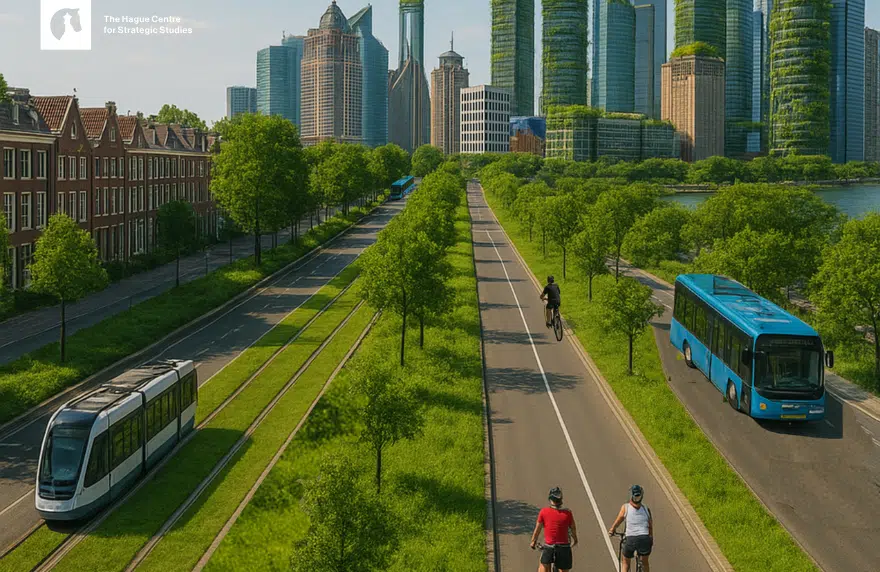Propelling Green Ambitions:
Policy Cycles and Priorities in China and the Netherlands
A new HCSS report by Fiona De Cuyper, Ardi Bouwers, and Laura Birkman explores how China and the Netherlands design, implement, and adjust their sustainability policies—and where meaningful cooperation can accelerate the green transition.
Both countries face intensifying environmental pressures, from extreme weather to pollution and resource depletion. While their political systems differ, China and the Netherlands share long-term ambitions aligned with the Paris Agreement, including rapid renewable energy expansion, circular-economy development, and climate resilience. In May 2025, both reaffirmed their intent to deepen practical cooperation on climate and sustainability. This report analyses how such cooperation can be strengthened.
Using the policy cycle as an analytical lens, the study compares Dutch and Chinese approaches across three domains: physical connectivity, environmental quality, and climate-related resilience. It shows that the Netherlands relies on a legally embedded cycle with strong stakeholder engagement and independent evaluation, while China follows a more directive “Double Wheel” model where central guidance meets local experimentation. Both systems increasingly emphasise monitoring, evaluation, and enforcement—especially critical in sustainability transitions that require constant adjustment.
The report highlights overlapping national priorities: green energy, circularity, and innovation. Dutch strengths lie in integrated spatial planning, active mobility, water management, and circular-design frameworks. China’s leadership in scaling green infrastructure, electric mobility, and demonstration zones offers complementary capabilities. These complementarities create openings for collaboration on smart charging, cycling infrastructure, port decarbonisation, zero-waste pilots, adaptive drainage, and resilient urban design.
Three overarching lessons emerge:
- Actors matter—successful cooperation requires engaging ministries, knowledge institutes, local governments, and pilot regions.
- Instruments must be tailored—combining Dutch regulatory and evaluative strengths with China’s industrial and fiscal mobilisation can produce hybrid solutions.
- Pilots are essential—whether Dutch living labs or Chinese mega-pilots, they translate ambition into scalable practice.
The report concludes with process and thematic recommendations to strengthen bilateral cooperation, including identifying relevant actors early, leveraging institutional ties, aligning with China’s industrial policy, focusing on complementarity, and prioritising innovation. Joint work on grid congestion, V2G systems, upstream circularity, engineering and socio-ecological resilience, and multi-level spatial planning can deliver tangible benefits to both partners.
As sustainability challenges intensify, deepening Sino-Dutch cooperation—grounded in shared objectives, complementary strengths, and a pragmatic long-term orientation—offers a promising path to accelerate the green transition at home and abroad.
With contributions by Alexander Krabbendam and Noemie Jacq.
Funding for this study was provided by the Netherlands Ministry of Infrastructure and Water Management. The views expressed are solely those of the authors.








